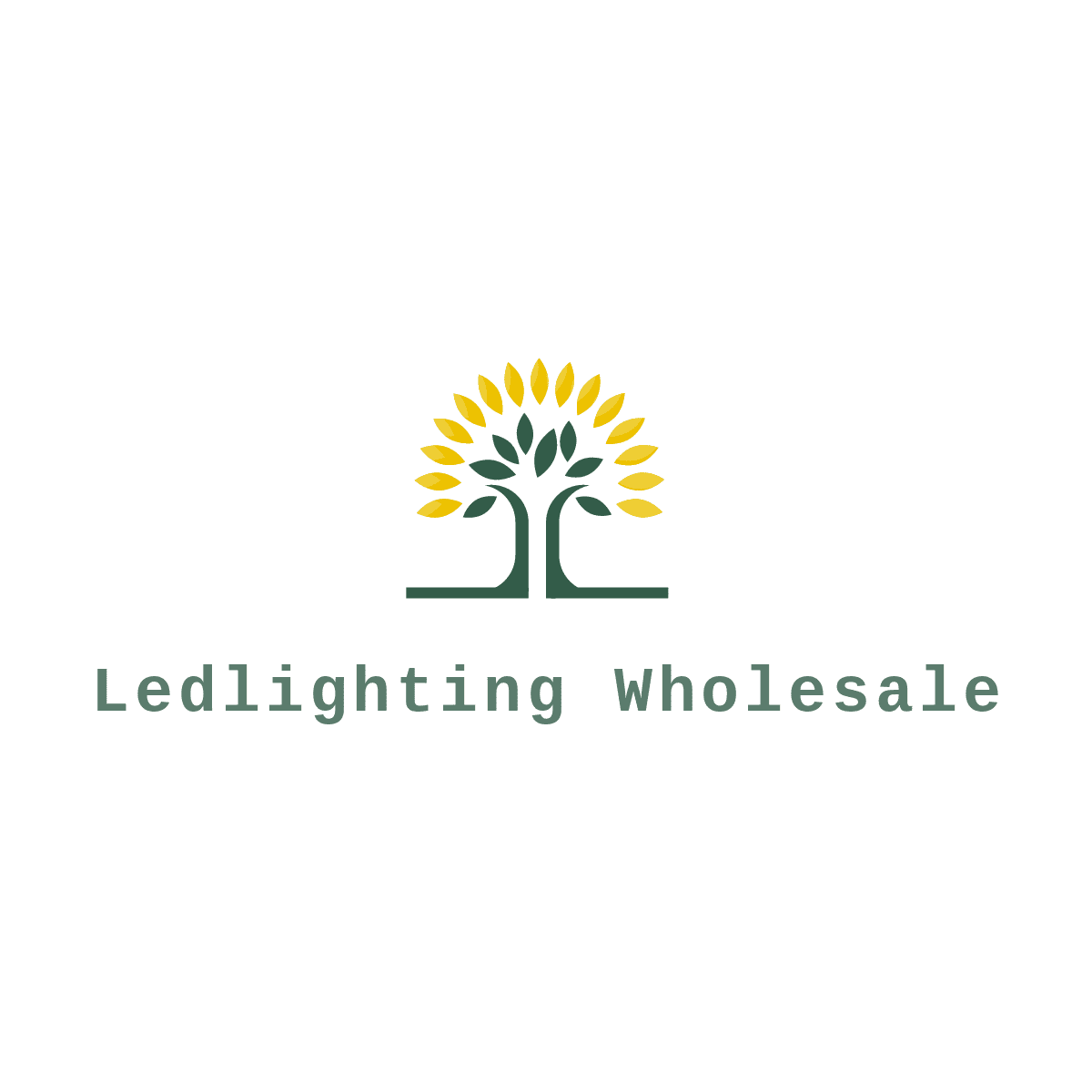How Many Lumens Do I Need for a Wall Pack?
Outdoor LED wall pack lights are essential for ensuring safety and visibility around buildings, pathways, and parking areas. Whether for residential or commercial purposes, selecting the right lumen output is crucial. In this article, we delve into the factors that determine the appropriate lumens for wall pack lights, helping you make an informed choice that meets your specific lighting needs.
Understanding Lumens
To make an informed decision about wall pack lighting, it's essential to understand what lumens represent. Lumens measure the total amount of visible light emitted by a source, giving a clear indication of the brightness you can expect. Unlike watts, which measure energy consumption, lumens focus solely on the light output. This distinction is vital when choosing LED lights, as LEDs provide more lumens per watt compared to traditional lighting options.
Why Lumens Matter for Wall Packs
The brightness of your wall pack, measured in lumens, directly impacts outdoor visibility and safety. Inadequate lighting can leave areas poorly illuminated, compromising security and increasing the risk of accidents. Conversely, too much brightness can lead to light pollution and unnecessary energy costs. Striking the right balance with the appropriate lumen count ensures both efficiency and effectiveness in your lighting strategy.
Factors Affecting Lumen Requirements
Several factors influence the number of lumens required for your wall pack lights:
-
Location and Purpose: The area being lit—whether a small pathway or a large parking lot—will dictate the necessary brightness. Residential settings typically require fewer lumens than industrial or commercial spaces.
-
Mounting Height: The height at which the wall pack is installed affects how light spreads. Higher installations generally require more lumens to cover a larger area effectively.
-
Light Distribution: The beam angle and distribution pattern of the fixture are critical. A narrower beam may concentrate light in a specific area, while a wider beam spreads light over a broader area. Choosing the right distribution ensures even and adequate illumination.
-
Environmental Conditions: Weather and environmental factors, such as fog, rain, or dust, can diminish light effectiveness. In harsher conditions, a higher lumen output may be necessary to maintain visibility.
-
Local Regulations: Compliance with local lighting regulations is crucial. Some areas have restrictions on light pollution or energy usage, which can influence your lumen choice.
Choosing the Right Lumens for Different Areas
Selecting the appropriate lumens for various outdoor settings is key to achieving optimal lighting:
-
Residential Pathways: For small residential pathways, wall packs with 1000-2000 lumens are typically sufficient. This provides enough light for safety without overwhelming the area.
-
Commercial Building Entrances: For the entrance of a commercial building, a lumen range of 4000-6000 ensures clear visibility and security for employees and visitors.
-
Parking Lots: Larger areas like parking lots require more substantial lighting. Wall packs with 10,000-15,000 lumens or more are ideal, depending on the lot's size and layout.
-
Industrial Facilities: Industrial sites often need high-output wall packs with 20,000 lumens or more to cover extensive areas and meet heightened security demands.
Wall Pack Types and Their Lumen Output
Understanding the different types of wall packs available can help you choose the right one for your needs:
-
Standard Wall Packs: These are versatile and commonly used, offering a range of lumen outputs suitable for various applications.
-
High-Output Wall Packs: Ideal for large areas or sites requiring intense illumination, these wall packs deliver significantly higher lumens.
-
Adjustable/Rotatable Wall Packs: These fixtures allow for flexibility in light direction, making them useful for areas needing customizable lighting angles.
-
Dimmable Wall Packs: With dimming options, these wall packs provide adjustable lumen output, allowing you to reduce brightness when full intensity is not required.
Environmental and Economic Considerations
When choosing wall packs, consider both environmental impact and long-term cost efficiency:
-
Energy Efficiency: LED wall packs are far more energy-efficient than traditional lighting, converting more energy into light rather than heat. This efficiency translates into lower electricity bills and a reduced carbon footprint.
-
Cost of Ownership: Although LED wall packs may have a higher upfront cost, their longer lifespan and energy savings make them more economical over time.
-
Environmental Impact: Choosing high-efficiency LED lights with appropriate lumens reduces energy consumption, contributing to a lower environmental impact.
Calculating the Lumen Requirements
Here’s how you can calculate the lumens needed for different scenarios:
-
Residential Pathways: A small pathway may require wall packs with around 1000-2000 lumens. Calculate based on the length and width of the pathway to ensure even coverage.
-
Commercial Building Entrances: For a standard-sized entrance, you might need 4000-6000 lumens. Consider the height of the installation and the surrounding environment.
-
Parking Lots and Large Areas: For parking lots, the lumen requirement increases with area size. A typical calculation might involve multiplying the area size by a factor that accounts for the desired brightness level.
-
Industrial Facilities: Large industrial areas need high lumen outputs—20,000 lumens or more—to ensure comprehensive coverage. Consider both the height of installation and the specific needs of the area.
Case Studies and Practical Examples
Real-world examples can offer insight into effective lighting solutions:
-
Small Residential Pathway: A homeowner installed a 1500-lumen wall pack at the entrance of a garden path, providing sufficient light for safe navigation without causing light spill into neighboring properties.
-
Commercial Building: A business opted for 5000-lumen wall packs to illuminate the entrance and adjacent areas, enhancing security and creating a welcoming environment for employees and customers.
-
Large Parking Lot: A retail store used multiple 12,000-lumen wall packs to cover their parking lot, ensuring even lighting and reducing dark spots that could pose security risks.
-
Industrial Facility: A factory installed 25,000-lumen wall packs at key points around the facility, ensuring bright, consistent light that met both safety and security standards.
Installation Considerations for Wall Packs
Proper installation is crucial for optimal performance:
-
DIY vs. Professional Installation: While some may prefer a DIY approach, hiring a professional ensures that the wall packs are installed correctly, maximizing their lifespan and effectiveness.
-
Mounting Height and Angle: Consider the best height and angle for installation to achieve the desired light distribution.
-
Weatherproofing and Durability: Ensure that your wall packs are rated for outdoor use and can withstand local weather conditions to prevent premature failure.
Government Incentives and Rebates
Switching to LED lighting can also come with financial benefits:
-
Energy Efficiency Programs: Many governments and utility companies offer rebates or incentives for installing energy-efficient lighting. Check with local authorities to see if you qualify.
-
How to Apply: Typically, applying for these programs involves submitting documentation of your purchase and installation. Be sure to keep all receipts and product information.
Common Mistakes to Avoid
Avoid these pitfalls when selecting and installing wall packs:
-
Over-Illumination: Using too many lumens can lead to excessive brightness and increased energy costs. It’s essential to calculate the correct lumen requirement for your space.
-
Ignoring Light Distribution: Ensure that the light is distributed evenly across the area. Poor distribution can result in dark spots and ineffective lighting.
-
Neglecting Maintenance: Regularly check and clean your wall packs to maintain their performance. Dust and debris can reduce light output and efficiency.
Conclusion
Choosing the right number of lumens for your LED wall pack lights is crucial for ensuring safety, security, and efficiency in outdoor lighting. By considering factors such as location, mounting height, and environmental conditions, you can select the perfect lighting solution for your needs.
FAQs
-
Can I use a higher lumen wall pack for my residential area?
- Yes, but it may lead to excessive brightness and higher energy consumption. Stick to the recommended lumen levels for residential areas.
-
Are LED wall packs more energy-efficient than traditional lighting?
- Absolutely. LED wall packs are significantly more energy-efficient, offering longer lifespans and lower energy costs.
-
Can I install wall packs myself, or do I need a professional electrician?
- While DIY installation is possible, hiring a professional ensures that the installation is done safely and correctly.
-
Are there dimmable LED wall packs available?
- Yes, many models come with dimming options, allowing you to adjust the brightness as needed.
-
Are there any government incentives for switching to LED outdoor lighting?
- Some regions offer rebates or incentives for upgrading to energy-efficient LED lighting. Check with local authorities to learn more.














![[Premium Quality LED Lights & Accessories Online]-LED LIGHTING WHOLESALE LLC](http://ledlightingwholesalellc.com/cdn/shop/products/ledposttoplighting_5069eb4b-b235-408e-8b54-ef686752da3d_360x.jpg?v=1626337483)
![[Premium Quality LED Lights & Accessories Online]-LED LIGHTING WHOLESALE LLC](http://ledlightingwholesalellc.com/cdn/shop/products/posttoplight_c85be955-244c-4aec-82b2-a357862d3437_360x.jpg?v=1626337483)

![[Premium Quality LED Lights & Accessories Online]-LED LIGHTING WHOLESALE LLC](http://ledlightingwholesalellc.com/cdn/shop/products/ledhighbay_4719ce4f-76d9-414d-b4d8-6f1d9916222c_360x.jpg?v=1650983181)
![[Premium Quality LED Lights & Accessories Online]-LED LIGHTING WHOLESALE LLC](http://ledlightingwholesalellc.com/cdn/shop/products/41w60w80w100wledwallpack_d5fb8ad0-f1fe-4418-b735-e7919dc83274_360x.jpg?v=1626402504)

![[Premium Quality LED Lights & Accessories Online]-LED LIGHTING WHOLESALE LLC](http://ledlightingwholesalellc.com/cdn/shop/products/200wledfloodlight_6692acd2-e729-4e49-b36c-56c9151c34b5_360x.jpg?v=1633497385)
![[Premium Quality LED Lights & Accessories Online]-LED LIGHTING WHOLESALE LLC](http://ledlightingwholesalellc.com/cdn/shop/products/ledfloodlights_26a2b40c-ff31-4760-81e3-4b7bbcfabadb_360x.jpg?v=1633497384)
![[Premium Quality LED Lights & Accessories Online]-LED LIGHTING WHOLESALE LLC](http://ledlightingwholesalellc.com/cdn/shop/products/CANOPYLIGHT_360x.jpg?v=1626444062)
![[Premium Quality LED Lights & Accessories Online]-LED LIGHTING WHOLESALE LLC](http://ledlightingwholesalellc.com/cdn/shop/products/ledcanopylight1_360x.jpg?v=1626444062)
![[Premium Quality LED Lights & Accessories Online]-LED LIGHTING WHOLESALE LLC](http://ledlightingwholesalellc.com/cdn/shop/products/solarledlight_36c9b816-8abc-42a6-aca4-e1ea20bf579f_360x.jpg?v=1631586789)
![[Premium Quality LED Lights & Accessories Online]-LED LIGHTING WHOLESALE LLC](http://ledlightingwholesalellc.com/cdn/shop/products/solarledlight1_a64e5c79-1454-42d4-9fc2-b813c3a1ce35_360x.jpg?v=1631586790)
![[Premium Quality LED Lights & Accessories Online]-LED LIGHTING WHOLESALE LLC](http://ledlightingwholesalellc.com/cdn/shop/products/ledhighbay_cdc01a51-ec3d-4bb2-ac82-b2c7cc7cfb25_360x.jpg?v=1631622169)
![[Premium Quality LED Lights & Accessories Online]-LED LIGHTING WHOLESALE LLC](http://ledlightingwholesalellc.com/cdn/shop/products/HIGHBAY_b5fb10cd-41c0-4fb1-a066-9f012fefe2ba_360x.jpg?v=1631622169)